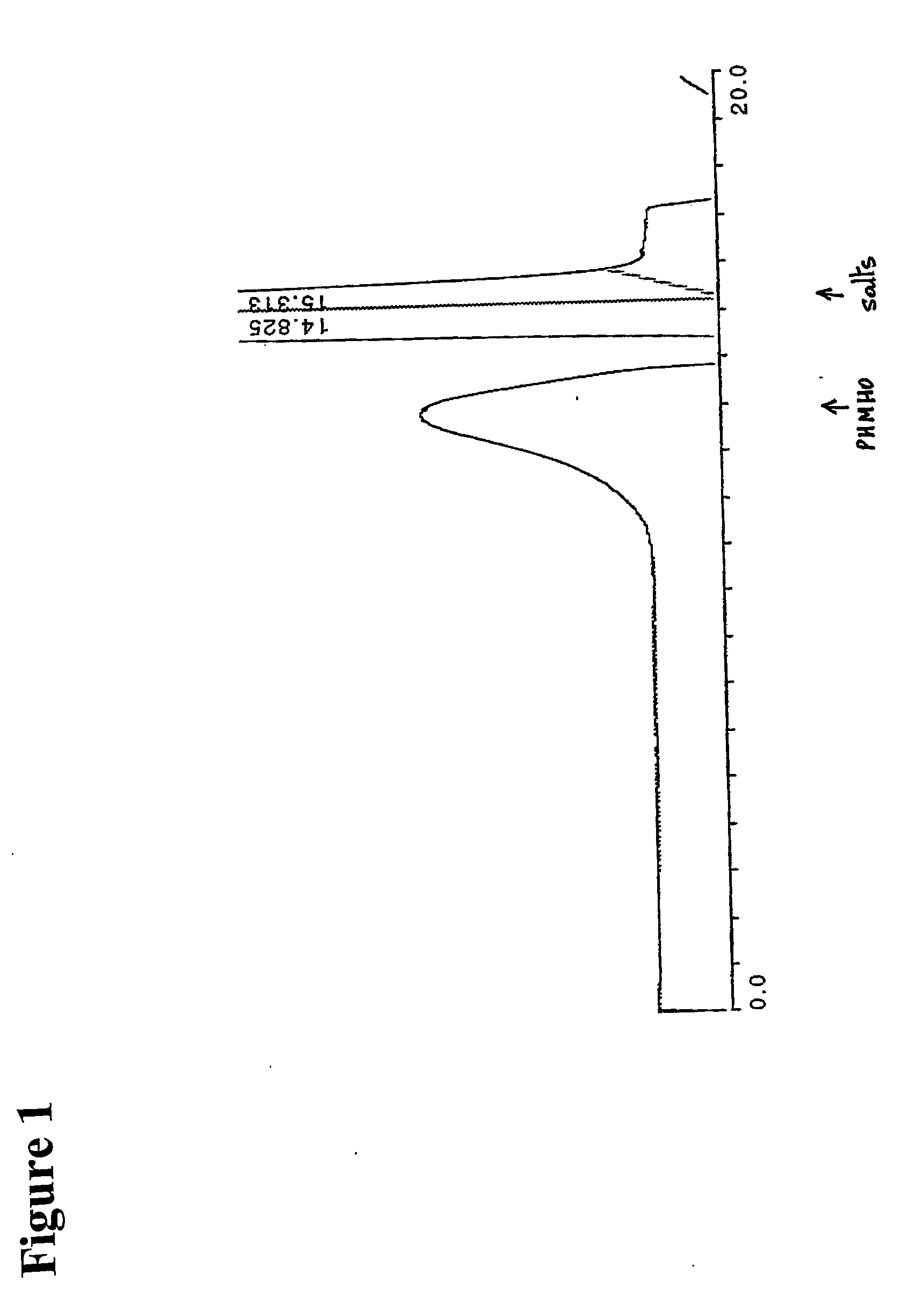Biodegradable polyketal polymers and methods for their formation and use
a biodegradable polymer and polyketal technology, applied in the direction of powder delivery, medical preparations, radiation therapy, etc., can solve the problems of drug delivery methods/systems, increased commonity and complexity of sustained release formulations,
- Summary
- Abstract
- Description
- Claims
- Application Information
AI Technical Summary
Benefits of technology
Problems solved by technology
Method used
Image
Examples
example 1
Formation of Polyaldehydketal by Inulin Oxidation
[0294]Inulin from Chicory (polymerization degree ca. 35), 0.5 g was dissolved in 10 mL water at 60° C. The solution was cooled to room temperature and mixed with a suspension of 0.8 g sodium periodate in 2 mL of water. After overnight incubation, the reaction mixture was filtered and studied by size exclusion HPLC. It was found that periodate oxidation results in a small shift of the molecular weight distribution towards lower molecular weights.
example 2
Formation of Polyalcohol Polyketal by Polyaldehydroketal Reduction
[0295]The reaction mixture of Example 1 was cooled to 0° C. (ice-bath), and was slowly poured into a cold solution of 1 g sodium borohydride in 2 ml water under stirring. The reaction mixture was kept on ice bath to prevent the temperature from rising above 20° C.
[0296]The reaction mixture was studied by size exclusion HPLC. Borohydride reduction was not found to further affect the apparent molecular weight distribution (FIG. 1). The product was further isolated by gel chromatography on Sephadex G-25 and lyophilized. The purified product was then studied by proton NMR spectroscopy. The obtained spectrum (FIG. 2) fully corresponded to the expected structure of poly [1-hydroxymethyl-1-(2-hydroxy-1-hydroxymethyl-ethoxy)-ethylene oxide], or PHMHO:
example 3
Oxidation of Levan
[0297]Levan (purchased from Sigma-Aldrich), 0.5 g was suspended in 10 mL water at 90° C. The solution was cooled to room temperature and mixed with a suspension of 0.9 g sodium periodate in 2 mL of water. After overnight incubation on a shaker, the reaction mixture was filtered and studied by size exclusion HPLC. It was found that periodate oxidation results in shift of the molecular weight distribution towards approximately twice lower molecular weights than of original Levan.
PUM
| Property | Measurement | Unit |
|---|---|---|
| molecular weight | aaaaa | aaaaa |
| molecular weights | aaaaa | aaaaa |
| temperature | aaaaa | aaaaa |
Abstract
Description
Claims
Application Information
 Login to View More
Login to View More - R&D
- Intellectual Property
- Life Sciences
- Materials
- Tech Scout
- Unparalleled Data Quality
- Higher Quality Content
- 60% Fewer Hallucinations
Browse by: Latest US Patents, China's latest patents, Technical Efficacy Thesaurus, Application Domain, Technology Topic, Popular Technical Reports.
© 2025 PatSnap. All rights reserved.Legal|Privacy policy|Modern Slavery Act Transparency Statement|Sitemap|About US| Contact US: help@patsnap.com



